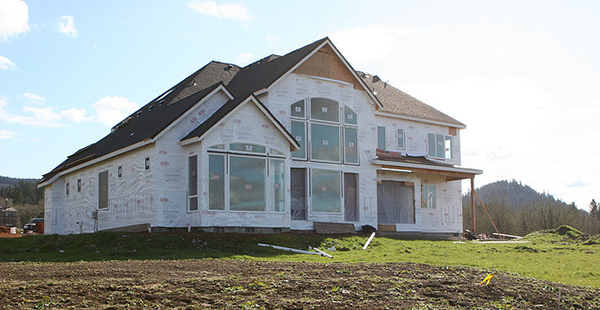Economic Snapshot: Builder confidence rises after four months of stagnation

This increase follows four months of the index holding steady and is the highest reading since January 2016.
Housing Market Index
Builder confidence in the market for newly constructed single-family homes rose two points to a level of 60 in June.
“Builders in many markets across the nation are reporting higher traffic and more committed buyers at their job sites,” said NAHB Chairman Ed Brady, a home builder and developer from Bloomington, Ill. “However, our members are also relating ongoing concerns regarding the shortage of buildable lots and labor and noting pockets of softness in scattered markets.”
All three components of the National Association of Home Builders/Wells Fargo Housing Market Index (HMI) posted gains in June. The component gauging current sales conditions increased one point to 64. The index charting sales expectations in the next six months jumped five points to 70. The component measuring buyer traffic rose three points to 47.
“Rising home sales, an improving economy and the fact that the HMI gauge measuring future sales expectations is running at an eight-month high are all positive factors indicating that the housing market should continue to move forward in the second half of 2016,” said NAHB Chief Economist Robert Dietz.
Looking at the three-month moving averages for regional HMI scores, the South rose two points to 61 and the West increased one point to 68. The Northeast dropped two points to 39 and the Midwest decreased one point to 57.
NFIB Small Business Optimism Index
The NFIB Small Business Optimism Index rose two-tenths of a point in May to 93.8. The index remains well below the 42-year average of 98.
Four of the ten index components posted a gain, four declined and two were unchanged. The biggest increase was Expected Business Conditions, which rose five points. This is a good sign but still nine percentage points below last year’s reading.
Owners continue to report that they cannot find qualified workers and cite it as their fourth “Single Most Important Business Problem.” Fifty-six percent reported hiring or trying to hire, up three points, but 48 percent reported few or no qualified applicants for the positions they were trying to fill. Twenty-seven percent of all owners reported job openings they could not fill in the current period, down two points but historically strong.
Fifteen percent reported using temporary workers, up 2 points from April and 5 points from March. A seasonally adjusted net 12 percent plan to create new jobs, up 1 point from March. This suggests that labor markets are tightening overall.




